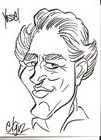The unseen Dorothea Lange
After the stock market crash of 1929, Dorothea Lange shuttered her portrait studio in San Francisco and began shooting on the streets, documenting the homeless population and the cityâs growing breadlines.
Paul S. Taylor, an economics professor, hired her in 1935 to make photographs for a report on migratory labor for the state of California.
Initially placed on the payroll as a typist â because there was no budget allocated for a photographer â she went to work shooting migrant workers and collecting quotes in order to put a human face on the data.
The resulting study, with its combination of statistics and analysis and expressive photographs, became the model for the Farm Security Administrationâs photography unit.
She was officially hired as a âField Investigator Photographerâ under Rooseveltâs New Deal programs, and her territory expanded from California to include Nevada, Utah, New Mexico and Arizona.
A petite woman with a limp from a childhood case of polio, she was able to get very close to her subjects, even with her bulky camera, to make the intimate and empathic portraits she was known for.
âI walk into situations where I am very much an outsider,â Lange said. âTo be a crippled person, or a disabled person, gives an immense advantage. People are kinder to you. It puts you on a different level than if you go into a situation whole and secure.â
In addition to the photographs, Lange also wrote down quotes from her subjects and kept a record of her own observations.
Looking at the provisional homes made from cardboard and plywood in Californiaâs central valley, she wrote: âThey have built homes here out of nothing. They have planted trees and flowers. These flimsy shacks represent many a last stand to maintain self-respect.â
Langeâs work had impact. After the publication of her âPea-Pickers Campâ photographs in the San Francisco News, the federal government sent 20,000 pounds of food to the migrants.
Her âMigrant Motherâ photograph from that series became a symbol of the era, but her reach was much wider.
âLangeâs photographs enlarged the popular understanding of who Americans were, providing a more democratic visual representation of the nation,â wrote historian Linda Gordon.
A new monograph, âDorothea Lange: Grab a Hunk of Lightning,â is a retrospective of Langeâs career. Spanning three decades, it includes her famous work as well as lesser-known and rarely seen photographs, including Japanese internment camp relocations and her global travels.
The book accompanies a documentary by Langeâs granddaughter, Dyanna Taylor, set to air on PBS in 2014. Containing never-before-seen footage, Taylor says the film will do more than discuss the historical aspects of her grandmotherâs work.
âThe film invites you to look closely at Lange's family dynamics, her muses â both men â and her mission with the camera. As the film reveals her work, it also reveals the cost of a creative life â the cost to her family â her children, her marriages, and her extended family. We see her great silver gelatin successes, and, at times, her personal failures.â
â Rebecca Horne, Special to CNN
Filed Under: Black-and-white ⢠Dorothea Lange ⢠Photo Book
Dorothea LangeDorothea Lange (1895-1965) was an influential American photojournalist. She is best known for her work during the Great Depression.
link-
http://cnnphotos.blogs.cnn.com/2013/10/01/the-unseen-dorothea-lange/?hpt=hp_c3

